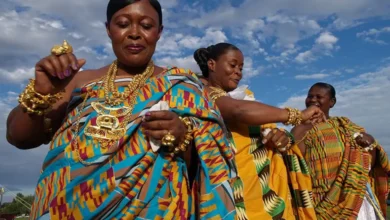Discover Ghana’s dazzling textiles — from royal Kente cloth to bold Ankara prints. Learn what colors and patterns mean, where they come from, and how to wear them with respect.
Imagine walking into a festival in Ghana.
Drums beat. Dancers spin. And everywhere — color. Gold. Green. Red. Black. Woven into bold, beautiful patterns that seem to glow in the sun.
At the heart of it all? Kente cloth.
See also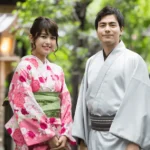 Traditional Clothing in Japan
Traditional Clothing in Japan
But this isn’t just fabric.
It’s history. Royalty. Wisdom. Worn like armor. Shared like poetry.
In this article, you’ll learn:
- Why Kente was once only for kings
- What every color and pattern really means
- How Ghanaians wear tradition every day
- Why Ankara prints are taking over global fashion
- Where to see, buy, or even weave your own piece
Whether you’re planning a trip, researching culture, or just love bold style — get ready to fall in love with Ghana’s living art.
See also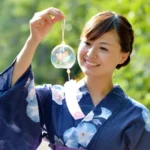 Traditional Japanese Clothing: Yukata
Traditional Japanese Clothing: Yukata
Let’s go.
What Is Traditional Ghanaian Clothing?
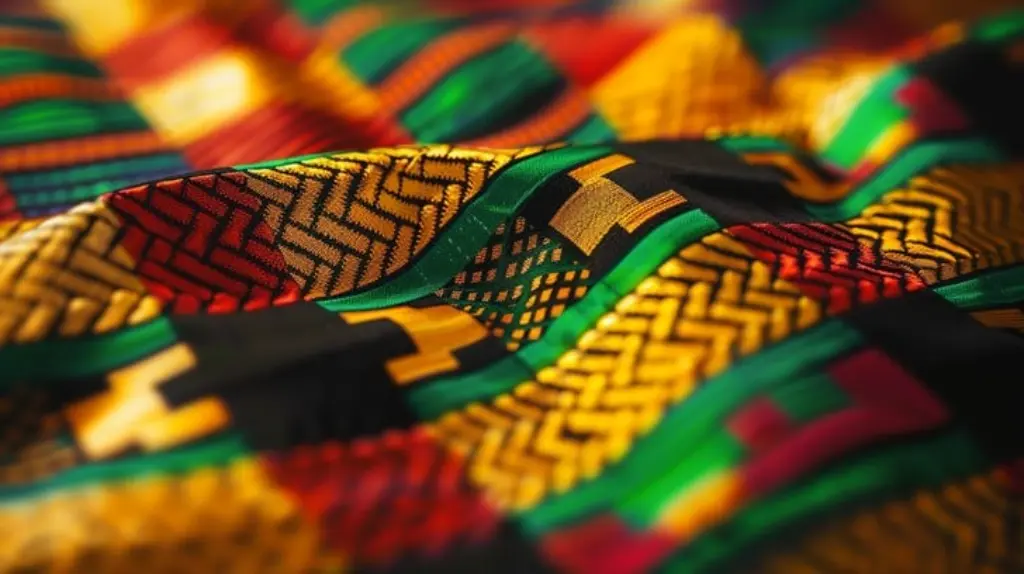
Traditional Ghanaian clothing = color + meaning + pride.
It includes:
✅ Kente cloth — handwoven silk and cotton, worn like royalty
✅ Adinkra cloth — stamped with symbolic motifs
✅ Ankara (African wax print) — bold, colorful, everyday favorite
✅ Fugu/Smock — Northern Ghana’s woven tunics
✅ Kaba and Slit — elegant dress style for women
These aren’t costumes. They’re daily wear. Ceremonial robes. Fashion statements.
Each piece tells a story — about who made it, who wears it, and what it stands for.
Quick History: From Kings to Graduations
Ghana’s clothing didn’t start in stores. It started on looms — under trees, in villages, passed down for generations.
The Legend of Kente
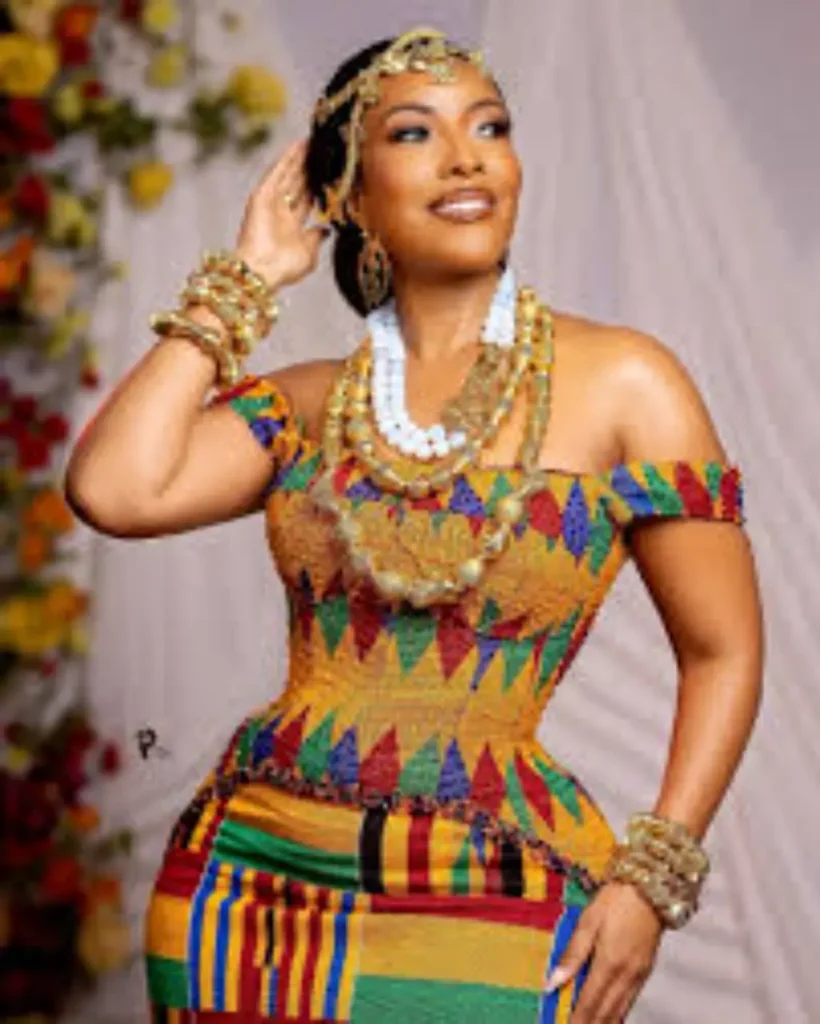
Ashanti legend says two brothers saw a spider weaving a web.
They copied its moves — and created the first Kente patterns.
By the 1600s, only Ashanti kings could wear the finest silk Kente.
Commoners? Banned — unless gifted by royalty.
Colonial Times: Quiet Resistance
Under British rule, Western clothes were pushed.
Ghanaians kept wearing their own.
Kente = silent pride.
Adinkra = hidden messages.
Clothing became identity. No one could take that.
1957: Independence. Explosion.
When Ghana became Africa’s first free nation, Kente went public.
Kwame Nkrumah — Ghana’s first president — wore it everywhere.
Message? We are African. We are proud.
Today? You’ll see Kente at New York graduations, London weddings, Paris runways.
The world noticed. Ghana never stopped.
Kente Cloth: Every Thread Tells a Story
Kente isn’t decoration. It’s language.
Every stripe. Every color. Every shape — it means something.
How It’s Made
Real Kente is handwoven — mostly by men in villages like Bonwire or Adanwomase.
Threads (silk or cotton) are dyed. Woven into 4-inch strips. Sewn together.
One cloth? Can take weeks. Or months.
No two are the same. Even similar ones carry unique stories.
Color Meanings (Simple Guide)
| Color | What It Means |
|---|---|
| 💛 Gold/Yellow | Wealth. Royalty. Fertility |
| 🟩 Green | Growth. Harvest. Renewal |
| ❤️ Red | Blood. Sacrifice. Passion |
| ⚫ Black | Ancestors. Spirit. Maturity |
| 💙 Blue | Peace. Love. Harmony |
| ⚪ White | Purity. Joy. Celebration |
| 💜 Purple | Femininity. Healing |
| ⚫ Grey | Healing. Cleansing |
| ⚪ Silver | Calm. Joy |
Example: Gold + green + black = Royalty honoring ancestors during harvest.
Famous Patterns & Their Messages
- “Sika Futuro” → “Golden Nugget” = Wealth
- “Eban” → “Safety” = Family unity
- “Fathia Fata Nkrumah” → “Fathia is worthy of Nkrumah” = Love across cultures
- “Obi Nkye Obi Kwan Mu Si” → “Nobody walks another’s path without getting tangled” = Be careful. We’re all connected.
Wearing a pattern? It’s not random. It’s a message.
How to Wear Kente — And Who Should Wear It
Kente isn’t thrown on. It’s styled with care.
For Men
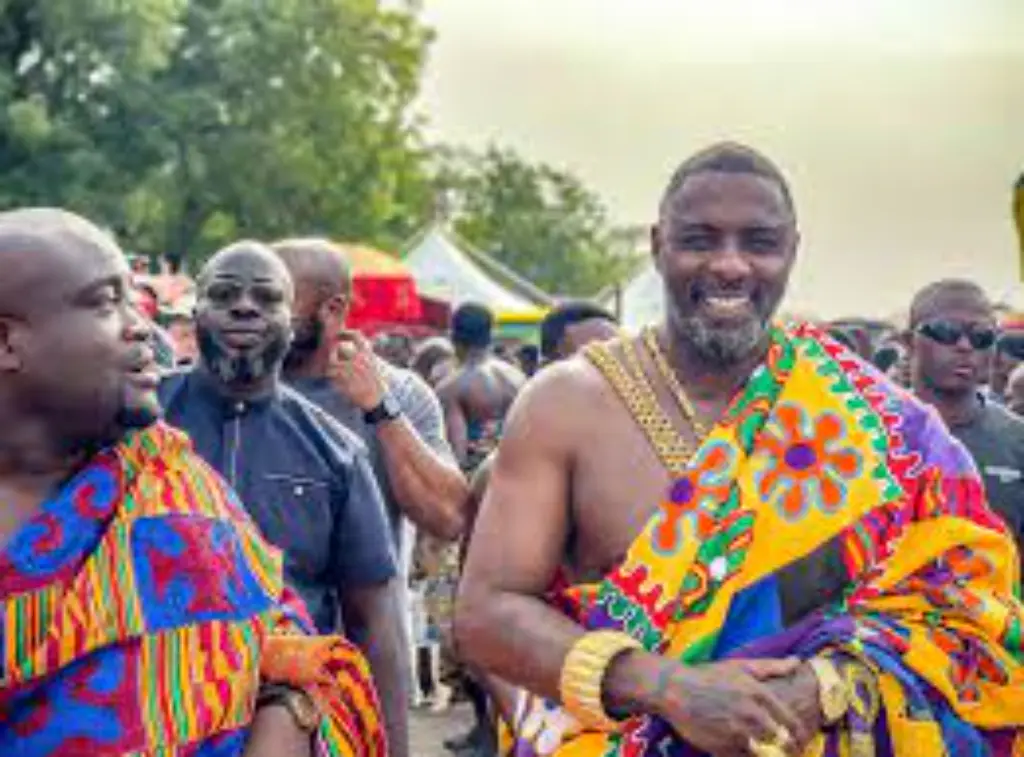
- Wrapped over one shoulder (right side covered, left bare).
- Match with cap or hat.
- Often worn with nothing underneath — or a plain white shirt.
Worn for:
- Chiefs’ gatherings
- Weddings
- Funerals (specific patterns)
- Graduations
- National holidays
For Women
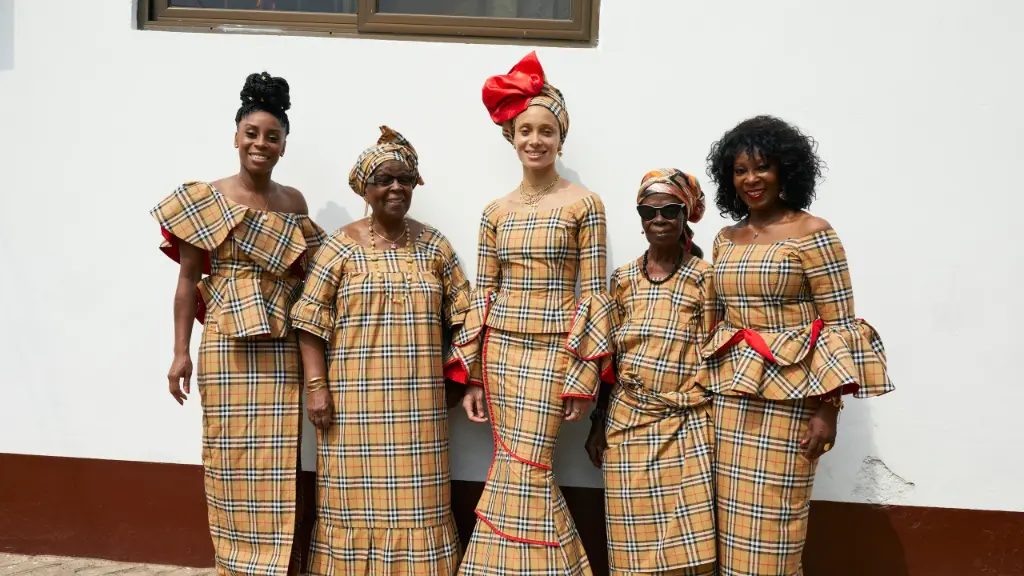
- Two pieces: wrap skirt + matching top or shawl.
- Sometimes sewn into dresses or gowns.
- Headwrap often matches.
Worn for:
- Church
- Naming ceremonies
- Festivals
- Political rallies
Can Non-Ghanaians Wear Kente?
✅ YES — if you do it right.
🚫 Don’t:
- Wear sacred royal patterns without knowing their meaning
- Use it as costume (Halloween, parties)
- Buy cheap knockoffs made overseas
✅ Do:
- Learn what your pattern means
- Buy from Ghanaian weavers
- Wear it for meaningful events — graduations, cultural days, solidarity
Beyond Kente: Ghana’s Other Must-Know Textiles
Kente is king — but Ghana’s wardrobe is deep.
Adinkra Cloth: Symbols That Speak
Made by stamping cloth with dye from tree bark.
Each symbol = a lesson:
- Gye Nyame → “Except for God” = Faith
- Sankofa → “Go back and fetch it” = Learn from the past
- Denkyem (Crocodile) → Adaptability
- Akoma (Heart) → Patience
Once worn for funerals. Now also for casual and formal wear.
Ankara (African Wax Print): Bold. Bright. Everywhere.
Originally Dutch-made for Indonesia — now Ghana’s streetwear superstar.
Used for:
- Dresses (Kaba and Slit)
- Shirts, skirts, headwraps
- Suits, sneakers, bags
No fixed meanings — but designers name prints with proverbs.
Example: “You Dey Mad?” → Playful warning against drama.
Fugu/Smock: Northern Comfort
From Ghana’s north — thick, handwoven cotton tunics.
Stripes. Checks. Earth tones.
Worn by men and women. Loose. Comfy. Perfect for cool nights.
Regional Styles: One Country, Many Looks
Ghana’s fashion changes with the landscape.
Ashanti Region (Kumasi)
👑 Kente heartland.
- Men: Gold-trimmed wraps, sandals, jewelry.
- Women: Beaded dresses, layered necklaces, headwraps.
Vibe: Royal. Rich. Storytelling in silk.
Coastal Regions (Accra, Cape Coast)
🌊 Modern meets traditional.
- Ankara rules — stylish dresses, sharp suits.
- Kente for big events.
- Mixes Western cuts with African prints.
Vibe: Chic. Vibrant. Instagram-ready.
Northern Ghana (Tamale, Bolgatanga)
🌾 Earthy. Woven. Warm.
- Fugu smocks for everyone.
- Leather sandals. Beaded accessories.
- Built for dry heat + cool nights.
Vibe: Grounded. Artisan. Timeless.
| Region | Star Garment | Vibe |
|---|---|---|
| Ashanti | Royal Kente | Regal, symbolic |
| Coastal | Ankara Prints | Bold, modern |
| Northern | Fugu Smock | Earthy, practical |
The Hands Behind the Cloth
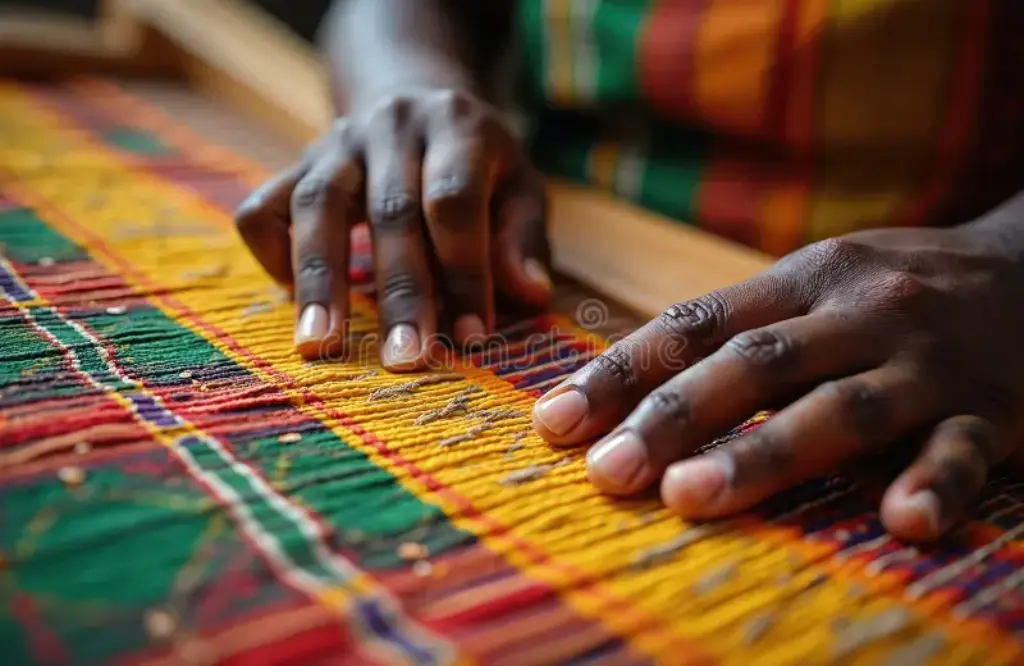
Every piece? Made by skilled hands — often using ancient methods.
Weavers of Bonwire
In Ashanti villages, boys start learning at age 8–10.
Master weavers? Decades of practice.
Tourists can watch — or try weaving (carefully!).
Adinkra Stamp Carvers
Artisans carve symbols into calabash gourds.
Dye? Boiled bark → rich black ink.
One cloth = 10+ stamps. Hours of work.
Ankara Tailors
In Accra’s Makola Market, tailors turn fabric into magic.
Bring your print. Pick a style. Get it in 24 hours.
Designers like Christelle Owusu fuse tradition with runway flair.
Today: Pride, Protest, Pop Culture
Ghana’s textiles aren’t stuck in the past. They’re leading the future.
Festivals = Fashion Shows
At Homowo, Aboakyer, or Panafest, dress is everything.
Chiefs in full regalia. Drummers in Fugu. Dancers in Kente.
It’s alive. Loud. Proud.
Graduations = Heritage Moments
Across the diaspora, Kente stoles mark achievement.
In Ghana, naming ceremonies, weddings, funerals still demand tradition.
Clothing = memory. Memory = power.
Fashion Goes Global
Ghanaian designers shine:
- Osei-Duro → Hand-dyed, eco-friendly
- Larry Jay → Gender-fluid Ankara suits
- Stella Jean → Global collabs
Nike. Louis Vuitton. They’ve teamed up with Ghanaian artists.
Appropriation vs. Appreciation
⚠️ Problem: Fast fashion steals patterns. Sells $5 scarves. Weavers earn pennies.
✅ Fix:
- Buy direct from Ghana
- Credit the culture
- Learn before you wear
Respect > trend.
How to Wear It Right (Visitor or Fan)
Want to join in? Do it with heart.
If You’re Visiting Ghana
✅ Do:
- Wear Ankara — locals love it!
- Buy Kente from village weavers
- Ask before taking photos
- Get something custom-tailored
🚫 Avoid:
- Sacred royal patterns (unless you know their story)
- Calling all prints “Kente”
- Haggling too hard — fair pay matters
If You’re in the Diaspora or Abroad
✅ Do:
- Wear Kente stoles at graduations
- Support Black-owned African brands
- Learn pattern meanings
- Share stories — not just selfies
🚫 Avoid:
- Using funeral cloths as decor
- Wearing tribal dress as costume
- Claiming designs as “your vibe” without credit
Tip: When in doubt — ask. Ghanaians love sharing their culture with respectful fans.
Conclusion
Traditional Ghanaian clothing — especially Kente — is more than fabric.
It’s memory. Message. Majesty.
Each color speaks. Each pattern teaches. Each thread ties past to present — village to city — Ghana to the world.
This isn’t museum stuff. It’s living. Breathing. Evolving.
Worn by students. CEOs. Musicians. Moms.
Stitched by hands that honor ancestors. Designed by minds building the future.
So next time you see a swirl of Kente or a flash of Ankara — look closer.
You’re not just seeing cloth.
You’re seeing courage. Creativity. Continuity.
And it’s stunning.
Want to Wear the Story?
👉 Visit Ghana — Walk through weaving villages. Shop local markets. Dance in a festival.
👉 Support Artisans — Buy direct. Pay fairly. Say their names.
👉 Learn Before You Wear — Know your pattern. Honor its roots.
👉 Share With Respect — Teach others. Credit creators. Keep culture alive.
Because in a world of throwaway fashion, Ghanaian textiles remind us:
Real beauty lasts.
Real beauty speaks.
Real beauty is made by hand — and heart.
Welcome to the rhythm of the loom.
Welcome to the wisdom of the symbols.
Welcome to Ghana — dressed in dignity.
References (APA Style)
Ross, D. H. (1998). Wrapped in Pride: Ghanaian Kente and African American Identity. UCLA Fowler Museum.
Renne, E. P. (1995). Cloth That Does Not Die. University of Washington Press.
Quarcoo, A. K. (1972). The Language of Adinkra Symbols. Sebewie Ventures.
Ampofo, A. A. (2020). Fashioning the Nation: Dress and Identity in Ghana. Journal of African Cultural Studies.
Ghana Tourism Authority. (2023). https://www.ghana.travel
British Museum. (n.d.). https://www.britishmuseum.org
